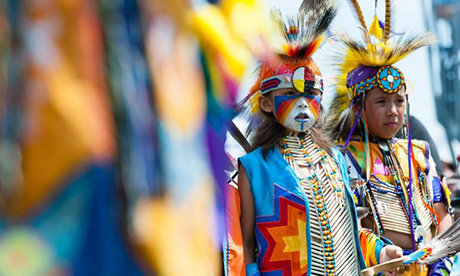Pope Francis is scheduled to fly to Canada on Sunday for a weeklong visit to meet the country’s Aboriginal peoples who were victims of colonization and various types of abuse at Catholic-run residential schools.
He has described the trip to North America as a “penitential pilgrimage”.
But who exactly are these Indigenous people of Canada and how much do they consist of the country’s population?
First Nations, Inuit and Métis
The history of Canada is intimately linked to that of the Aboriginals. This term refers to the first peoples of North America and their descendants.
The Canadian Constitution recognizes three groups of Aboriginal peoples: Indians – also known as First Nations – Inuit and Métis.
Members of the First Nations make up approximately 61% of the Aboriginal population, the Métis 32%, and the Inuit approximately 4%. These three groups each have their own distinct histories, languages, cultural practices and beliefs.
According to a 2016 census, more than 1.67 million Canadians identified themselves as Aboriginal. That’s only about 5% of the national population.
But it is the fastest growing population in Canada, as well as the youngest. In 2016, approximately 44% of all Aboriginals were under the age of 25.
Where Aboriginal Canadians live
Prior to colonization, the various Aboriginal peoples had their own political structures established in territories whose sometimes shifting borders were modified by the colonists.
Many Canadian territories today are still called “Aboriginal territories” or “traditional territories”.
These names refer to geographic areas that retain strong ties with the history of Aboriginal Canadians.
Nearly half of these Indigenous peoples live in these areas, while several groups are still fighting for government recognition of their traditional lands.
The rest of the Aboriginals (more than 50%) have moved to urban areas.
Most live in large cities such as Vancouver (British Columbia), Winnipeg (Manitoba), Edmonton (Alberta) or Montreal (Quebec).
Are Aboriginal Canadians citizens like all others?
Aboriginals saw their way of life disrupted by the colonists. Their integration into Canadian society — often linked to violent and forced acculturation — has been slow and painful.
The suicide rate among First Nations youth is five to six times higher than the national average, the employment rate of the Aboriginal population (58%) was still lower than that of the non-Aboriginal population (62%) in 2019, and, despite improvements, access to food resources and public services remains reduced or unequal.
These abject social and psychological consequences are often blamed on the “Indian Act”, the pass system, the reservations and the residential schools.
The Indian Act was passed in 1876 as a way to force First Nations people to abandon their culture and adopt a Euro-Canadian way of life.
The Act has evolved, but to this day has not been abolished. It still sets out the terms and conditions for obtaining Indian status and rules regarding reservations and the management of community resources.
The residential schools, on the other hand, tried to force young Aboriginals to assimilate Euro-Canadian culture by eradicating their ancestral habits and customs, and to convert them to Christianity.
Subsidized by the Canadian government, these residential schools were operated by members of the Catholic, Anglican and Presbyterian Churches.
And there have been well-documented moral and physical violence.
During his July 24-30 visit to Canada, Pope Francis is expected to ask forgiveness of the Aboriginals for the abuse that occurred in the Catholic-run schools.
- Alice Clavier, from Canada, occasionally writes for La Croix International.
- First published in La-Croix International. Republished with permission.
News category: Analysis and Comment.




